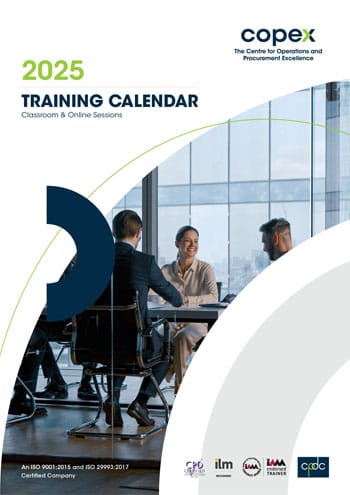
How to Prepare Your Workforce for Upcoming AI Implementations
5 mins readComplete Guide
As Artificial Intelligence (AI) moves from the realm of innovation into mainstream business operations, organizations must prioritize one critical factor for successful adoption—workforce readiness. While cutting-edge technologies promise enhanced productivity, intelligent automation, and data-driven decision-making, their effectiveness hinges on how well the people within the organization can adapt, leverage, and work alongside these advancements.
Preparing your workforce for upcoming AI implementations is not merely a technical initiative; it is a strategic transformation involving skills development, mindset shift, and cultural evolution. This guide outlines the key steps to ensure your team is AI-ready, resilient, and positioned to thrive in the evolving workplace.
Why Workforce Preparation Matters in the Age of AI
Artificial Intelligence is rapidly reshaping the workforce landscape across sectors—from finance and utilities to human resources and strategic planning. With AI’s potential to automate routine tasks, optimize operations, and uncover insights at scale, organizations that fail to prepare their workforce risk falling behind.
- Workforce readiness is crucial for:
- Ensuring smooth human-AI collaboration
- Avoiding resistance to change
- Retaining talent in a transformed workplace
- Maximizing ROI from AI tools and systems
AI is not here to replace human workers it is here to augment their capabilities. But without the right preparation, even the most advanced AI system can become an underutilized investment.
Common Challenges When Introducing AI in the Workplace
Before diving into solutions, it is essential to recognize the hurdles organizations face when implementing AI:
- Lack of digital literacy: Employees unfamiliar with AI basics may feel threatened or alienated.
- Fear of job displacement: Misconceptions about AI replacing human roles can cause anxiety.
- Skills gap: Many traditional job roles require upskilling to accommodate AI integration.
- Cultural resistance: Teams may be reluctant to change established workflows or trust AI decisions.
- Insufficient training: Inadequate education on AI tools and applications limits employee engagement.
Overcoming these barriers starts with strategic planning and targeted capacity-building.
Step 1: Assess Organizational Readiness
Preparation begins with understanding where your organization stands.
A comprehensive AI readiness audit includes:
-
Identifying departments most likely to be impacted by AI
-
Evaluating the digital literacy levels of employees
-
Pinpointing critical skill gaps
-
Assessing openness to change and innovation
This step lays the groundwork for designing a tailored learning and transformation strategy. For example, in departments like finance and budgeting, readiness should be aligned with tools that enhance predictive analytics and automation.
Professionals in these areas can benefit from courses like AI for Financial Analysis and Planning Course and AI-Driven Intelligent Budgeting and Cost Optimization Course, which deliver practical insights into AI application within corporate financial operations.
Step 2: Educate and Build AI Awareness
Awareness is the foundation of acceptance. Leaders must begin by demystifying AI—explaining what it is, what it’s not, and how it can enhance rather than replace human roles.
Key areas to cover:
-
Fundamentals of AI and machine learning
-
AI’s role in decision-making and automation
-
Ethical considerations and data governance
-
Use cases tailored to the specific industry
Training initiatives should include interactive sessions, expert-led workshops, and real-world case studies. For HR teams, the AI for HR Professionals Course introduces AI-powered recruitment, performance analysis, and employee engagement tools, making them better equipped to manage talent in an AI-enhanced workplace.
Step 3: Upskill and Reskill Employees
Equipping employees with relevant skills is essential to ensure they remain valuable contributors in an AI-augmented workplace. Upskilling focuses on enhancing existing roles with AI tools, while reskilling helps individuals transition into new roles enabled by AI.
Core skill areas include:
-
Data analysis and interpretation
-
AI-enabled software and platforms
-
Digital collaboration tools
-
Strategic thinking and problem-solving
-
Communication and change management
Customized learning paths and targeted courses, such as the AI Application for Utility Course, can help professionals in the energy and infrastructure sectors learn how AI improves operational efficiency, fault detection, and energy usage optimization.
Step 4: Foster a Culture of Innovation and Adaptability
AI implementation is as much about culture as it is about technology. Organizations that foster curiosity, experimentation, and continuous learning are more likely to succeed in their AI journey.
Here’s how to build an adaptive culture:
-
Encourage feedback and ideas from all levels of staff
-
Promote cross-functional collaboration on AI projects
-
Celebrate small wins and progress milestones
-
Provide psychological safety to try new tools and fail forward
Leadership plays a vital role in modeling adaptability. When senior executives embrace AI, the rest of the organization is more likely to follow suit.
Step 5: Redefine Roles and Responsibilities
AI adoption often leads to a restructuring of roles—not eliminating them, but reshaping them to focus on higher-value tasks. Job descriptions may need updates to reflect:
- Decision-making augmented by data insights
- Automation of repetitive or transactional duties
- Increased focus on creativity, empathy, and strategic planning
Transparency is crucial during this transition. Employers should communicate clearly about what’s changing, why it’s changing, and how employees will be supported.
Workforce transition plans should involve cross-training, mentoring, and involvement in AI implementation projects to boost ownership and confidence.
Step 6: Integrate AI Gradually with Workforce Involvement
Rather than deploying AI tools overnight, gradual integration enables teams to acclimate and test systems before scaling up.
Best practices for phased implementation:
-
Start with pilot projects in less critical operations
-
Choose use cases with clear KPIs and ROI
-
Involve end users in testing and feedback loops
-
Provide ongoing technical and emotional support
A workforce that participates in the journey is more likely to embrace AI as a partner rather than a threat.
Step 7: Leverage Training to Strengthen AI Adoption
Training is the cornerstone of workforce preparedness. Investing in targeted learning interventions allows employees to confidently navigate AI systems and align their roles with future business strategies.
At Copex Training, professionals across industries can choose from a wide portfolio of AI-focused training courses. These include specialized learning paths in HR, finance, utilities, budgeting, and strategic AI integration. The learning experience combines theoretical knowledge with hands-on applications, ensuring immediate value for both individuals and their organizations.
Whether you’re preparing HR teams to analyze workforce trends or enabling finance departments to make predictive decisions, Copex Training offers the resources to future-proof your business through strategic workforce development.
Step 8: Monitor Progress and Adjust Continuously
Workforce transformation is an ongoing process. Organizations should regularly assess the effectiveness of their AI readiness initiatives and adjust them as needed.
Key metrics to monitor include:
- Training completion and engagement rates
- Adoption levels of new AI tools
- Employee feedback and sentiment
- Operational performance improvements
- Reduction in error rates or manual interventions
Continuous feedback loops enable organizations to stay agile and address challenges early, ensuring long-term success.
The Strategic Advantage of a Prepared Workforce
Organizations that proactively prepare their workforce for AI integration gain a significant competitive advantage. Here’s why:
- Higher productivity through efficient AI-human collaboration
- Greater innovation as employees focus on strategic problem-solving
- Reduced turnover as staff feel supported and empowered
- Faster return on AI investment due to high adoption rates
- Future-ready culture that thrives on change
AI is not just a technology revolution—it is a human transformation. By investing in workforce preparedness, businesses are not only adopting new tools but reshaping their DNA for the digital era.
Empower People to Power AI
AI will redefine how we work, compete, and deliver value. But at the heart of every successful implementation is a well-prepared, skilled, and adaptable workforce. Technology alone cannot drive transformation people can.
From building awareness to providing technical skills and redefining organizational culture, every step in preparing the workforce for AI must be intentional, inclusive, and strategic. Leaders must view AI as a journey that elevates human potential rather than a destination that replaces it.
Through specialized training courses, such as those offered at Copex Training’s Artificial Intelligence Courses, organizations can equip their teams to not just survive but lead in the AI-driven future.





